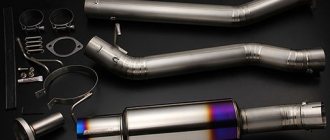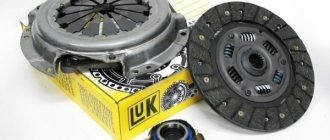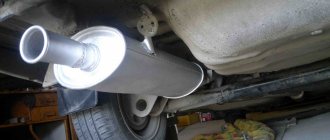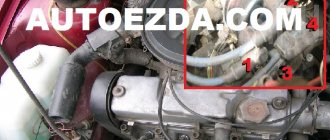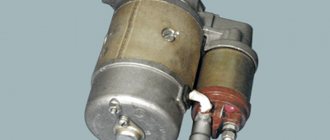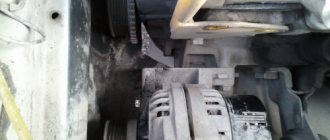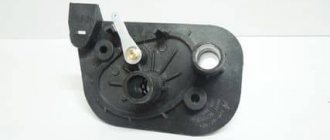Appearing on the domestic market in 1984, the legendary G8 immediately won an army of fans. The model became not only an excellent family car, but also acquired the status of a youth hatchback. For a long time, the car was in service with many sports clubs.
The model came off the assembly line only in 2003, almost 20 years after its appearance. During this period, completely different power units were installed on the car. One of them was the VAZ 21083 engine.
The engine was specially created for a transverse arrangement. This is due to the front-wheel drive "eight". Until now, many car enthusiasts are interested in the features of the engine, its shortcomings and capabilities.
Specifications
Thanks to the hatchback's low weight (915 kg) and short length (4006 mm), it could be accelerated by almost any engine of its time. Engine 21083 has the following technical characteristics:
- volume - 1.5 liters;
- cast iron cylinder blocks;
- in-line engine type;
- The power supply system is represented by a carburetor;
- piston stroke is 71 mm;
- power - 73 hp;
- 4 cylinders (2 valves each);
AI93 fuel is suitable for engine 21083. The engine consumes 7.9 liters in the city, 7 liters on the highway. For every 1000 km, 50 g of oil is consumed. The following oils should be poured into the engine:
- 5W-30;
- 5W-40;
- 10W-40;
- 15W40.
According to factory data, the resource of the unit is 125 thousand km. In reality, it can reach 250 thousand km. The predecessor of the unit is a 1.3 liter engine.
The engine's capabilities are quite wide. Without losing engine life, you can increase power to 90 hp. If you “squeeze” all the potential out of the engine, the power can be increased to 180 hp. The 1.5 liter engine has a modification with an injector. This unit operates in conjunction with a 5-speed gearbox.
The 1.5 linjector engine has a power of 78 hp. at 5400 rpm. The use of an engine with direct injection made it possible to improve the dynamic characteristics of the car, as well as improve efficiency. In addition, the amount of harmful emissions has significantly decreased.
Cars of the VAZ line using the 21083 engine
The 21083 engine was used to equip the following models of the VAZ manufacturer:
- 2108 – three-door hatchback;
- 21083 – three-door hatchback;
- 2109 – five-door hatchback;
- 21093 – five-door hatchback;
- 21099 – sedan;
- 2113 – three-door hatchback;
- 2114 – five-door hatchback;
- 2115 – sedan.
VAZ 2115
That is, the entire line of front-wheel drive cars produced before 2013 was equipped with these internal combustion engines.
Engine Features
VAZ 21083 (carburetor) has several characteristic features that are important for the owner of a V8 to know. Description of some engine features:
- It is worth refusing to use low-octane fuel for this model. This negatively affects the operation of the carburetor. Initially, the engine was created for 93 gasoline.
- The wad is located on top, which allows you to get rid of inertial moments.
- The engine has a belt drive - the car owner should change the guide rollers and the belt itself every 50 thousand km.
- In this series of units, the piston diameter was increased to 82 mm.
- The reliability of the motor is explained by its design. If the drive belt breaks, the moving pistons do not collide with the valves. This also makes it easier to overhaul the engine.
In addition, the unit is lightweight and economical. Such features appealed to many domestic car enthusiasts. The injector provides more economical fuel consumption, as well as ease of starting the engine in any weather conditions.
If the injector is clogged, detonation combustion of the fuel mixture is possible, which can result in engine damage.
Maintenance
The classic internal combustion engine design in combination with a transverse engine arrangement under the hood of front-wheel drive cars is subject to the following maintenance regulations:
| Maintenance object | Time or mileage (whichever comes first) |
| Timing belt | replacement after 100 thousand km |
| Battery | 12 months/20 thousand km |
| Valve clearance | 24 months/20 thousand km |
| Crankcase ventilation | 24 months /20 thousand km |
| Belts that drive attachments | 24 months /20 thousand km |
| Fuel line and tank cap | 24 months /40 thousand km |
| Motor oil | 12 months/10 thousand km |
| Oil filter | 12 months/10 thousand km |
| Air filter | 21 – 24 months /40 thousand km |
| Fuel filter | 48 months/40 thousand km |
| Heating/Cooling Fittings and Hoses | 24 months /40 thousand km |
| Coolant | 24 months /40 thousand km |
| Oxygen sensor | 100 thousand km |
| Spark plug | 12 – 24 months /20 thousand km |
| Exhaust manifold | 12 months |
The accompanying instructions contain a description of the parameters; the manufacturer strongly recommends following the maintenance procedure for engines 21083.
Flaws
It is worth paying attention to several serious shortcomings of the unit. One of the problem areas is the oil filter, which often leaks. Running dry has a negative impact on the condition of the unit.
A common malfunction is the malfunction of the distributor sensor. Fuel pumps often fail. The carburetor is also the weak point of the unit. This is especially true for the first models.
The quality of the fuel mixture for internal combustion engine 21083 should be quite high. If for the first modifications of VAZ cars it was possible to use 76 gasoline, then in the case of s21083 it can quickly fail.
Power unit overheating
Trouble happened on the way
Many owners of VAZ Samara cars complain that the engine gets very hot. This situation is especially often observed in the southern regions of our country. There can be many reasons for this phenomenon, and not all of them are related to the cooling system.
VAZ engine operating temperature °C. The radiator fan should turn on at 101 - 105°C. The engine gets hot mainly for 6 reasons.
- There are air pockets in the liquid cooling system (coolant).
- The coolant system is filled with low-quality antifreeze.
- The radiator fan switch sensor is faulty.
- The thermostat is not working.
- The crankcase ventilation system is dirty.
- The connecting rod and piston group is severely worn.
Regardless of the identified cause of the problem, the following measures must be taken.
- Drain the old coolant.
- Flush the coolant system.
- Check the tightness of the system, including the expansion tank cap.
- If minor leaks are found, repair them.
- Check the functionality of the thermostat. If necessary, replace it.
- Make sure the fan switch and coolant temperature sensor are working properly. Replace them if necessary.
- Blow out the crankcase ventilation system with compressed air.
- Fill with new, high-quality antifreeze.
If after all these procedures the engine gets very hot again, get ready for a major overhaul.
Tuning
For car enthusiasts who own a V8 (carburetor, injector), it is important to know what the tuning power unit is capable of when properly equipped. The optimal and simplest way to boost the engine is to replace the camshaft with an OKB Dinamika one. The output will be about 80 hp.
If you modify the intake manifold and cylinder head, as well as the milling of the cylinder head and valves, you can get 85-90 hp. An increase in power in the future is possible by increasing the engine volume to 1.6 liters. This is accomplished by mounting a crankshaft with a 74.8 mm stroke. In this case, you can get all 95 hp.
If you use valves with a larger diameter and also use lightweight valve plates, you can squeeze up to 110 hp out of the engine. Such VAZ engine tuning can satisfy many car owners.
You can also install a compressor to increase the power of the unit. It is better to switch to injection injection. However, you can also install a compressor with a carburetor. It is possible to increase the power characteristics without a turbine up to 150 hp, but the engine life will be significantly reduced.
In addition, in the city the car will behave too “aggressively”. The best option is to install a 16-valve cylinder head. If you use a typical city kit (receiver with exhaust on a 51 mm pipe, 54 or 56 mm throttle body), you can easily get 105-110 hp without losing resource.
Some car owners install a carburetor from a VAZ 21083 on a UAZ to reduce fuel consumption. However, it is better not to use this option - consumption practically does not drop, and traction decreases.
PP lever shakes at idle
Is the handle jerking? Check the engine mounts
A jerky shift lever at idle is a fairly common occurrence if your car is old. Few people associate this problem with the power unit, but in vain. This symptom indicates excessive wear of the engine mounting pads. And if the problem is not eliminated, the engine will sag, and other complications will appear - difficult gear shifting, severe shaking of the front of the car when driving and increased wear of constant velocity joints (CV joints). As a result, CV joints will have to be changed every 5,000 kilometers.
Procedure for replacing engine mounts on a VAZ 21099.
- We place the car on the inspection hole, put chocks under the wheels, and put the car on the handbrake.
- Disconnect ground from the battery.
- Open the hood all the way up.
- Remove the crankcase protection.
- We hang the power unit and gearbox on hoists and slightly pull them up.
- Unscrew the bolts securing the central front support.
- We remove the old support, tighten the hoist a little, and mark its top with a marker. This is necessary for proper installation of the new support.
- We mount a new support, attach its bolts, tighten them, but do not tighten them completely.
- We remove the starter.
- Unscrew the bolts securing the left pillow and remove it.
- Installing a new left pillow. We also tighten its bolts, tighten them, but do not tighten them completely.
- We put the starter back.
- We change the rear support in the same way.
- We lower the engine and then finally tighten all the mounting bolts for the airbags.
- We remove the hoist.
Replacement of the power unit supports has been completed. If it is not possible to hang the motor on hoists, you can place a wooden board under the crankcase and lift the engine using jacks placed under it.
Repair
Repairing a VAZ 21083 engine with your own hands is quite simple. The main thing is to know the cause of the breakdown. Many owners of cars with a well-known engine have encountered common problems over the years. Thanks to this, it was possible to identify the main symptoms of impaired engine operation and find measures to get rid of them:
- Unpleasant knocking is often the cause of changes in valve clearance. Adjustments are made every 50 thousand km.
- The engine starts to stall. With such a symptom, it is worth measuring the compression.
- The car will not start after being parked for a long time. The reason often lies in electronics. The repair measure is to diagnose the car at a service station.
- Fuel consumption has increased - often this malfunction is the result of carburetor contamination.
Repairing the VAZ 21083 engine in service centers is quite simple due to the high prevalence of the car in Russia.
Malfunctions: causes, elimination
The main problems of this type of internal combustion engine are:
| Malfunction | What caused | Remedy |
| Gasoline consumption has increased | clogging of the fuel system and attachments | flushing fuel lines, pump, carburetor |
| Engine won't start | ignition system failure, carburetor blockage or misadjustment | diagnostics of electronics, adjustment of quality and quantity screws |
| The motor "troits" | gasket breakdown, compression change | replacing consumables, restoring compression |
Specifically, the modification of the 21083 engine is characterized by burnt-out valves that cannot cope with the temperature conditions of the internal combustion engine. This design flaw is “treated” by tuning existing units.
Adjustment of valves
Adjustment, adjustment and cleaning
It is very undesirable to make changes to the calibration of the Solex carburetor, since this is a very accurate and balanced device with well-chosen characteristics.
All adjustments are of an operational nature and rarely change, but they must be checked preventively and adjusted if necessary:
- Adjusting the composition of the idle mixture is carried out using a gas analyzer, since the carburetor has great capabilities for ensuring minimal CO and CH emissions; it comes down to setting the permissible level of harmful gases with the “quality” screw at the nominal idle speed.
- The starting device is adjusted by changing the position of the cable sheath on the bracket so that the damper is fully open and closed in the extreme positions of the choke button.
- The fuel level in the float chamber is set so that when the top part of the carburetor is inverted and installed horizontally, the gap between the floats and the gasket is approximately 2 mm. After which the level can be checked by attaching the cap, starting the engine, turning off and removing the cap, the distance from the gasoline to the flange should be approximately 24 mm.
More subtle settings are available only to a qualified specialist, since changing some of them leads to disruption of others, so you can quickly bring the device to an inoperative state.
The same can be said about cleaning the carburetor. The use of a rough metal tool will lead to changes in the cross-sections of channels and jets. It is only allowed to wash the parts and channels of the housing with special aerosol carburetor cleaners after complete disassembly.
